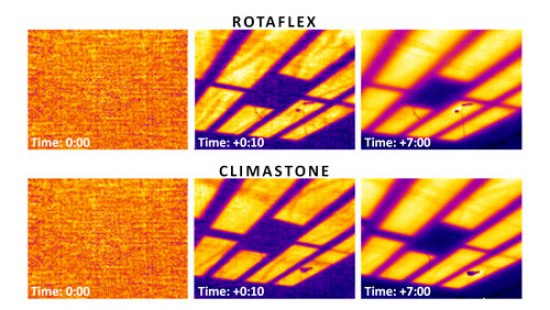Blown-in insulation and ECOFILM ceiling heating

Generally speaking, there isn’t any particular reason why this shouldn’t be possible. However, thermal insulation made from mineral wool which has been compressed into boards also fulfils a second function in ceiling heating applications – its weight presses the heating foil onto the plasterboard/gypsum fibreboard of the suspended ceiling, thus eliminating the danger of insufficient contact between individual layers. The firm which contacted us was concerned about whether the blown-in insulation would be heavy enough to press the ECOFILM foil onto the ceiling material. If it were not, there would be a reduction in the effective transmission of heat into the plasterboard/gypsum fibreboard. As a result, before the installation took place we performed comparative measurements.
The tests were carried out in Fenix’s climate chamber. During testing, the behavior of the system when standard 100mm thick ROTAFLEX AD 01 insulation board was used was compared to its behaviour when CLIMASTONE blown-in insulation (also 100mm thick) was employed. In the case of the insulation board, its installation took place in the standard manner, i.e. from below, while with the blown-in insulation an opening was made in the plasterboard for the insulation to be blown in; this was then closed with a section of plasterboard. ECOFILM C 514 foil was used. The tests focused on the comparison of the two insulation types in terms of the evenness of warming of the ceiling board, the dynamics of the onset of heating, and also the maximum temperatures reached.
The tests showed that the heating foil displayed very similar parameters with each of the types of insulation covering the foil. It can therefore be stated that it is possible to use blown-in insulation in ceiling heating applications where ECOFILM C is installed. However, material with a Class A fire rating must be used. The whole report on the performed measurements can be downloaded here: Link to a PDF file



